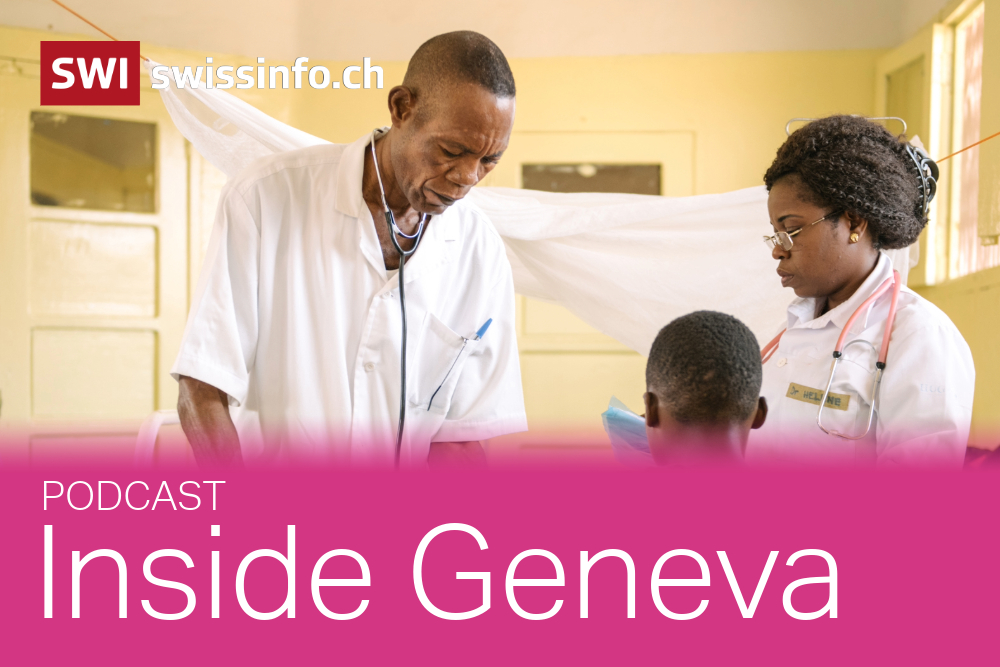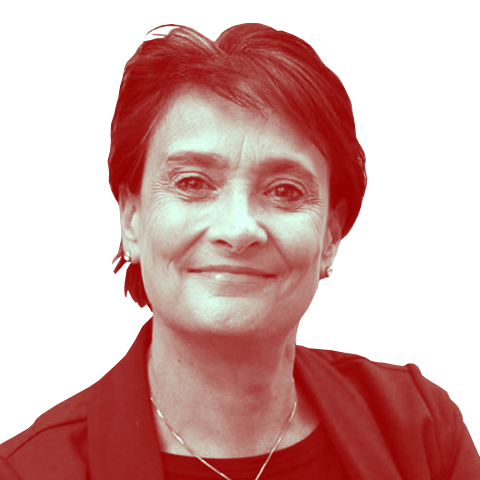
Unlocking treatments for neglected diseases
How would we feel if, in our family, school, community, or country, a disease was circulating that was, if untreated, nearly always fatal?
What if the only treatment available, developed almost a century ago, was so toxic that it killed 5% of those receiving it? And what if, despite confidence among medical researchers and pharmacists that a better treatment could be found, no money had been invested to make this improvement?
Here in the Global North, we have the luxury of choice; go to your local pharmacy and you’ll find a dozen different types of toothpaste, shampoo or aspirin. Your doctor will be able to offer a wide variety of blood pressure medications, anti-depressants, or painkillers, depending on the profile of the patient.

More
Summer profiles: unlocking treatment for neglected diseases
But in the Global South, deadly diseases still rage, untreated. These are known as “neglected diseases”. On this week’s Inside Geneva, we profile someone working to address the problem. Olaf Valverde is a clinical project leader at the Geneva-based NGO Drugs for Neglected Diseases Initiative, or DNDi, and when I went to see him, he explained first exactly what the term “neglect” means.
“There are diseases that affect an important proportion of humanity,” he told me, “but for which no new drugs have been developed, because there could be no income.”
“Because they affect very poor populations in remote rural areas.”
Sleeping sickness
Olaf’s speciality is sleeping sickness, a disease many of us know little about, and, for the sleep-deprived among us, it may sound a bit cosy…an illness that makes you sleep a lot.
Nothing could be further from the truth. Trypanosomiasis, its scientific name, is a parasitic disease spread by the bite of a tsetse fly. It takes a while to develop, and symptoms emerge quite slowly, starting with headaches, followed by behavioural changes, agitation, and confusion. Finally, those affected fall into a coma, and, almost always, die.
Until recently, the only treatment for this disease was almost a century old. Developed by colonial powers in the 1930s and 40s, it was highly toxic, containing arsenic that corroded the veins into which it was injected. Patients receiving it described the sensation of burning up from the inside. A fifth of them died.
By the end of the 20th century a new, less toxic treatment had been developed. It turned out to be great for the few patients who lived in cities close to big hospitals, or the even fewer residents of the Global North who had had the misfortune to be bitten by a tsetse fly during a brief visit to Africa. But it didn’t really work for the vast majority of those affected, who were poor agricultural communities living in remote rural areas of sub-Saharan Africa.
Subscribe to ‘Inside Geneva’ on Apple PodcastsExternal link, SpotifyExternal link, or wherever you get your podcasts.
Why didn’t it work? It had to be injected four times a day, over a period of 14 days. Almost impossible in regions where most of the affected people lived. So, a drug was developed to treat a disease that mostly killed poor people, but it was only really suitable for the few wealthier people who were unlucky enough to get it too.
Glaring inequalities
It’s this kind of glaring inequality that motivates Olaf and his colleagues at DNDi. Their job involves pouring over data from pharmaceutical companies, and from clinical trials. We all know that some medicines are abandoned after initial trials show they don’t do what the researchers had hoped. But how many of us know that sometimes drugs are abandoned because there doesn’t seem to be a profitable market for them, or because they do show some promise…but not necessarily against the disease they were initially developed for?

More
How drug prices are negotiated in Switzerland and beyond
At DNDi, staff came across a broad spectrum of anti-parasitic medicine which, although it had shown some promise against Trypanosomiasis in animals, had been abandoned before reaching clinical trials in humans. Two years of in-depth research followed, and clinical trials, in partnership with the health ministry in the Democratic Republic of Congo (DRC), where sleeping sickness was prevalent.
It worked. In sub-Saharan Africa, cases of sleeping sickness have now dropped sharply. Thousands of lives have been saved. The new drug is easy to take – one tablet a day for ten days. But DNDi is also working towards an even simpler, single-dose version.
The success is a great source of satisfaction for Olaf, but what stays with him most is the experience of working with a team of local doctors in the DRC. “The motivation, concentration and interest shown by our doctors in the DRC who were developing the clinical trial, were totally amazing,” he tells Inside Geneva.
+ Whatever happened to the world’s most expensive drug?
“For them it was an opportunity to serve their people. And that was absolutely beautiful. And that’s the real pleasure of doing these kinds of things.”
So, what’s next on DNDi’s list? Olaf would like to tackle another parasitic disease, leishmaniasis, sometimes also known as Kala-Azar. It’s a vicious illness, spread by the bite of a sandfly, in which parasites attack the internal organs and bone marrow. It is almost always fatal.
Were such an illness to affect people in wealthy developed countries, there would be research foundations, fundraisers, and, in all probability, an effective treatment by now.
But, like sleeping sickness, Kala-Azar affects the world’s poorest. It is, as DNDi’s own website explains, “associated with malnutrition, population displacement, poor housing, a weak immune system, and lack of financial resources.” The disease claims tens of thousands of lives a year. But DNDi is working on it, and, if Olaf and his colleagues find a promising candidate, they hope for a partnership with a pharmaceutical company. Sanofi, for example, now produces the improved sleeping sickness treatment. As Olaf points out, while investing in some medicines may not yield blockbuster profits, drug companies also have their reputations to think of.
The problems of inequality in access to medicines arise, he says, “when you create an industry, and you don’t apply the duties. When you forget that drugs are meant to improve people’s quality of life. That should be the main goal.”
To hear the whole story of how an effective treatment for sleeping sickness came about, join us on Inside Geneva, it’s a fascinating listen!
Find out more about the ‘Inside Geneva’ podcast and our other Swiss podcasts in English here.
Edited by Marc Philipp Leutenegger

In compliance with the JTI standards
More: SWI swissinfo.ch certified by the Journalism Trust Initiative


























You can find an overview of ongoing debates with our journalists here . Please join us!
If you want to start a conversation about a topic raised in this article or want to report factual errors, email us at english@swissinfo.ch.